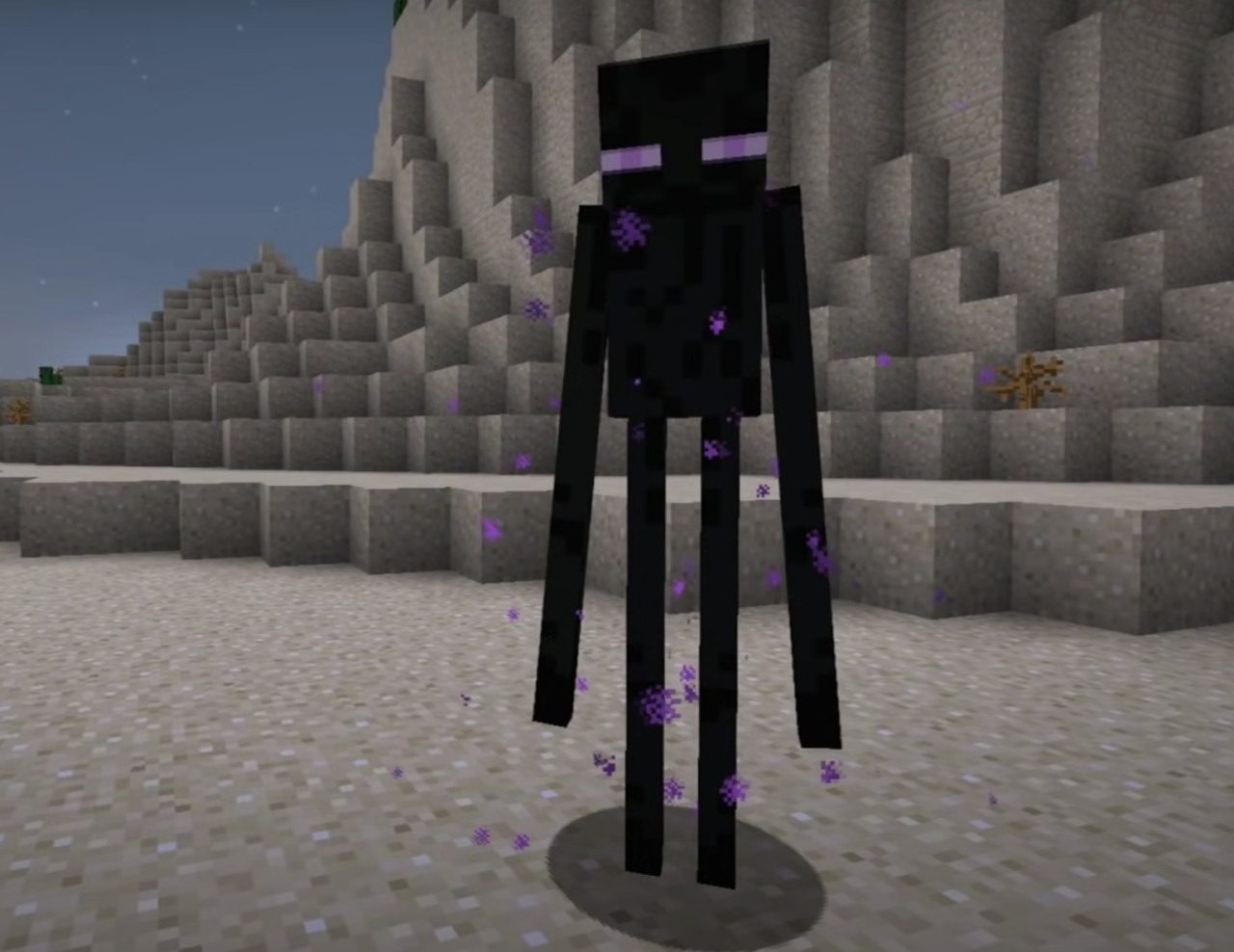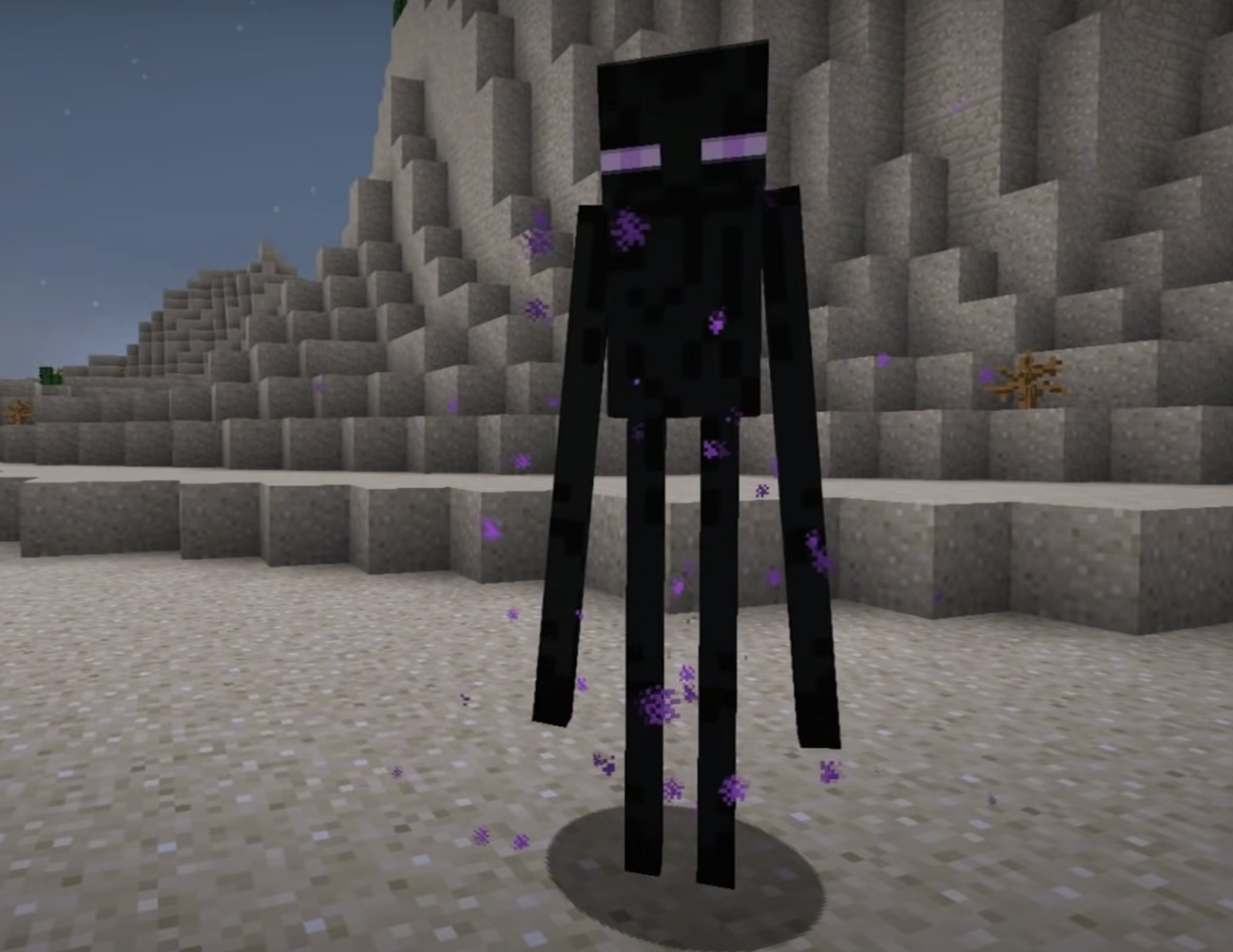Minecraft, a universe built on blocks and boundless imagination, is teeming with enigmatic creatures that populate its vast biomes. Among them, few are as instantly recognizable and chillingly iconic as the Enderman. These tall, slender, dark figures, with their glowing purple eyes and unsettling habit of teleporting, are a source of both fascination and dread for players. While their appearance and behavior are distinct, it is their unique, otherworldly vocalizations that truly set them apart and fuel endless speculation.
What exactly are these whispers, groans, and guttural sounds that emanate from the Enderman? Are they random ambient noises, or do they hold a deeper meaning, a language waiting to be deciphered? For years, dedicated players and linguistic sleuths within the Minecraft community have delved into the auditory files, experimenting with sound manipulation to uncover the hidden messages within the Enderman’s eerie speech. What they’ve found is a fascinating, if unsettling, window into the mind of one of Minecraft’s most mysterious mobs.
The Sonic Signature: How Endermen "Speak"
At first listen, the sounds of an Enderman are a disjointed symphony of low growls, high-pitched shrieks, and a distinctive, almost metallic groan that seems to echo from another dimension. They are often accompanied by the characteristic vwoop of their teleportation. These sounds alone are enough to send shivers down a player’s spine, especially when heard in the dead of night or the suffocating darkness of a cave.
However, the true nature of the Enderman language was revealed through a simple yet ingenious discovery: their vocalizations are, in fact, human speech played in reverse and pitch-shifted. This design choice by Mojang, whether intended as a cryptic puzzle or simply a clever way to create an alien sound, has given the Enderman a layer of depth and lore that few other mobs possess. The effect is one of extreme disorientation; the familiar sounds of human words become alien and menacing when subjected to this treatment, perfectly encapsulating the Enderman’s role as an "otherworldly" entity.
The specific processing applied to the human speech varies slightly, contributing to the difficulty in direct translation. Not every phrase is a crystal-clear reversal, and the pitch shifting can sometimes obscure the original word’s nuances. Yet, with careful listening and audio manipulation, a surprising number of phrases have been successfully decoded, offering tantalizing glimpses into what these creatures might be thinking or trying to communicate.
Decoding the Whispers: The Mechanics of Translation
The process of "translating" Enderman speech typically involves recording their in-game sounds, reversing the audio track, and then sometimes adjusting the pitch to bring it closer to a recognizable human voice. The results are often startling, revealing common English phrases that, when understood in context, paint a compelling picture of the Enderman’s reactive and territorial nature.
Let’s explore some of the most commonly decoded phrases and their potential implications:
-
"Hello?" / "Hi!"
- Enderman Sound: Often a low, drawn-out groan or a soft, almost curious murmur.
- Reversed & Pitch-shifted: "Olleh?" / "Ih!"
- Implication: This suggests a level of awareness and perhaps even a rudimentary form of greeting or acknowledgment. It hints that Endermen aren’t just mindless drones but entities capable of recognizing presence. When an Enderman emits a sound that translates to "Hello?", it could be an initial probe, an attempt to gauge your intentions, or simply an expression of their own presence in the area. It suggests a solitary nature, where encountering another being might be an unusual event.
-
"What’s up?" / "What are you doing?"
- Enderman Sound: A more questioning, sometimes slightly agitated series of sounds.
- Reversed & Pitch-shifted: "Pu s’tahW?" / "Gnioud uoy era tahW?"
- Implication: These phrases reveal a sense of curiosity or perhaps suspicion. Endermen are highly sensitive to their environment and seem to observe players intently. If they utter such a phrase, it’s likely in response to a player’s actions – mining, building, or simply standing still. It highlights their role as silent observers who become aggressive only when provoked, or when their "personal space" is invaded by a direct stare.
-
"Look for the eyes." / "Look at me."
- Enderman Sound: Often a distinct, almost commanding series of vocalizations, especially when agitated.
- Reversed & Pitch-shifted: "Seye eht rof kool." / "Em ta kool."
- Implication: This is perhaps one of the most chilling and iconic decoded phrases, directly referencing the Enderman’s core mechanic: their aggression is triggered by direct eye contact. When an Enderman says "Look at me," it’s not an invitation, but a challenge, a dare. It underscores their sensitivity to being watched, almost as if direct eye contact is perceived as an act of aggression or a violation of their privacy. The phrase "Look for the eyes" could be a warning to others of their kind, or perhaps even a subtle taunt directed at the player, hinting at the danger of their gaze.
-
"Help me." / "Run!"
- Enderman Sound: These are often associated with more distressed or aggressive sounds, sometimes higher-pitched wails or frantic growls.
- Reversed & Pitch-shifted: "Em pleh." / "Nur!"
- Implication: These phrases are particularly poignant. "Help me" suggests a creature that might be trapped, injured, or simply lost in its own existential dread. Given their solitary nature and origins in The End, a dimension often described as barren and bleak, this cry for help adds a tragic layer to their character. It implies they are not just hostile monsters but potentially suffering beings. "Run!", on the other hand, is a clear warning or a threat. It could be directed at a player, signaling imminent attack, or perhaps even at another Enderman, warning them of danger. The duality of these phrases – one pleading, one threatening – speaks to the complex, perhaps even conflicted, nature of the Enderman.
-
"Don’t look at me!" / "Stop staring!"
- Enderman Sound: These are typically emitted when a player has made eye contact, leading to the Enderman becoming hostile.
- Reversed & Pitch-shifted: "!em ta kool t’noD" / "!gnirats potS"
- Implication: These are perhaps the most direct expressions of their core behavioral trigger. They confirm that the act of staring is not just a game mechanic, but an actual perceived offense to the Enderman. It reinforces their desire for solitude and their deep aversion to being observed, highlighting a sensitive and territorial disposition.
Beyond Words: What Does the Language Reveal?
The decoded Enderman language, while fragmented, offers fascinating insights into their potential psychology and culture (fictional, of course).
- Territoriality and Privacy: The overwhelming emphasis on "looking" and "staring" reveals an intense need for personal space and privacy. Their aggression isn’t random; it’s a direct response to perceived invasion. This aligns with their solitary nature and their habit of wandering vast distances.
- Awareness and Observation: Phrases like "What are you doing?" and "Hello?" suggest a degree of awareness and observation. They are not mindless entities but seem to react to and process their surroundings.
- Potential for Distress/Suffering: The "Help me" phrase is a profound revelation. It humanizes them in a way, suggesting they might experience fear, pain, or loneliness. This adds a layer of pathos to their otherwise menacing presence, prompting players to wonder about their origins and the conditions of their existence in The End.
- Simple, Reactive Communication: The language appears to be relatively simple, focused on immediate reactions, warnings, and acknowledgments of presence. There’s no evidence of complex grammatical structures or discussions about abstract concepts. This aligns with their role as wandering, potentially ancient, but not necessarily highly social, beings.
- The Alien Other: Ultimately, the reversed speech trick works because it takes something intrinsically human and distorts it into something alien. This linguistic manipulation perfectly mirrors the Enderman’s role in Minecraft: a creature that is almost human-like in its form and behaviors (like picking up blocks), yet utterly foreign and hostile in its nature and origin.
The Enduring Mystery and Player Experience
Despite these fascinating discoveries, the Enderman language remains largely ambiguous in-game. Mojang has never officially provided a "translation guide," and the sounds themselves are sufficiently distorted to prevent casual decoding. This ambiguity is crucial to the Enderman’s enduring appeal. By leaving their full linguistic capabilities and intentions shrouded in mystery, the developers foster a sense of dread and curiosity.
For the player, encountering an Enderman is always an experience charged with tension. The subtle whispers and groans, now understood to contain fragments of human speech, make these encounters even more unsettling. Knowing that a creature might be saying "Look at me!" just before it charges adds a psychological layer to the gameplay that transcends simple mob combat. It transforms them from mere monsters into entities with a semblance of will and communication, albeit a distorted and hostile one.
The community’s efforts to decode the Enderman language are a testament to the depth of immersion Minecraft offers. It encourages players to look beyond the surface, to question, and to explore every facet of the game’s lore and mechanics. Fan theories abound, from Endermen being ancient builders trapped in a cursed form to being interdimensional travelers confused by the Overworld. Their language, in its enigmatic beauty, serves as a cornerstone for these theories.
Conclusion: The Silent Echoes of the Void
The Enderman language in Minecraft is a masterstroke of game design. By taking something as fundamental as human speech and twisting it into an alien, reversed, and pitch-shifted cacophony, Mojang created a creature that is not just visually terrifying but audibly unsettling on a psychological level. The fragmented translations – "Hello?", "What are you doing?", "Don’t look at me!", "Help me!" – offer tantalizing glimpses into their reactive nature, their aversion to being watched, and perhaps even a hint of their suffering.
More than just ambient sounds, the Enderman’s vocalizations are a key component of their identity, deepening their lore and cementing their status as one of Minecraft’s most iconic and intriguing mobs. They are the whispers of the void, echoes of a lost language, forever challenging players to listen closer and ponder the mysteries that lie just beyond the blocky horizon. The Enderman remains a silent, teleporting enigma, but through the patient work of the community, their language has begun to yield its secrets, revealing a creature far more complex than its initial terrifying appearance suggests.


